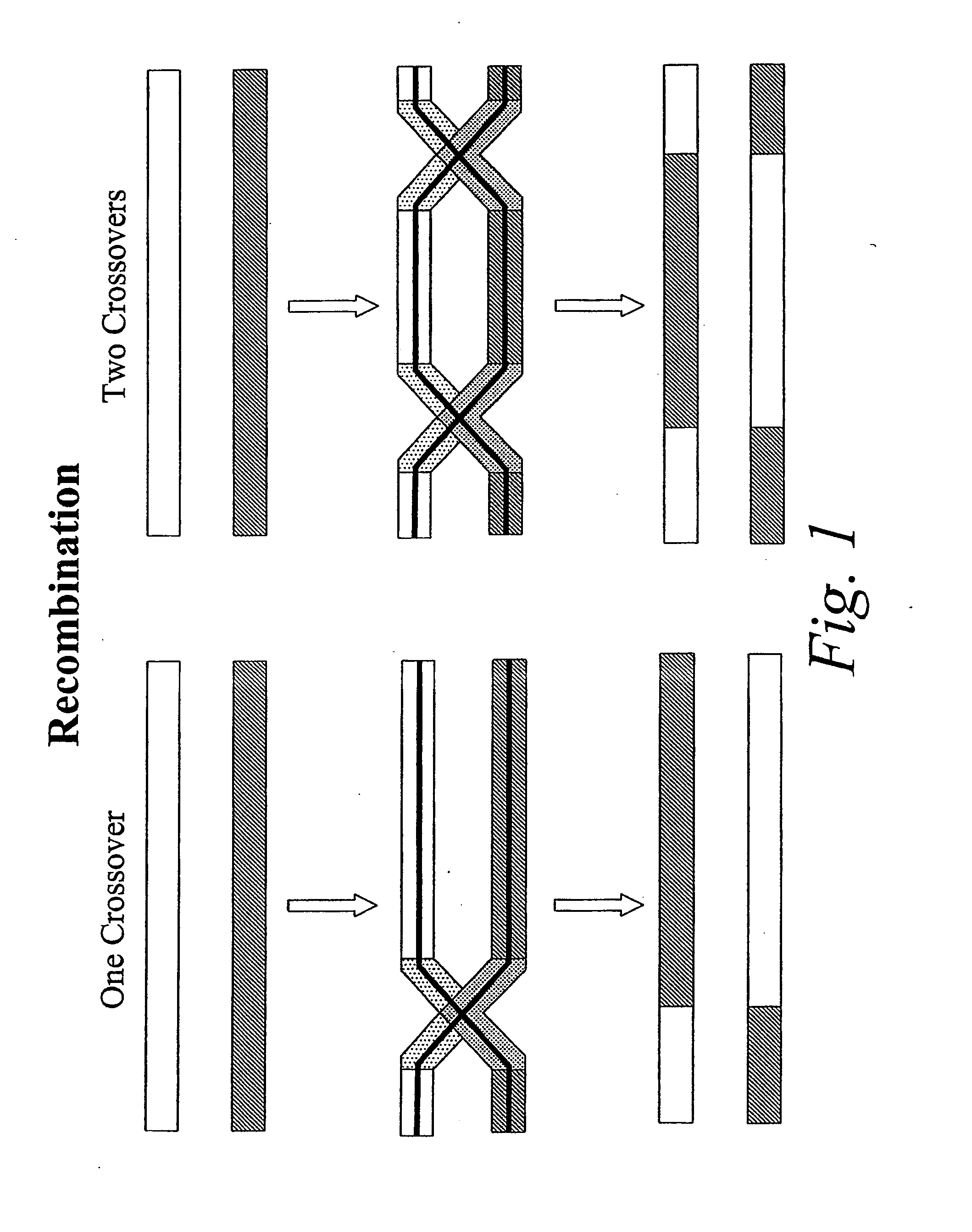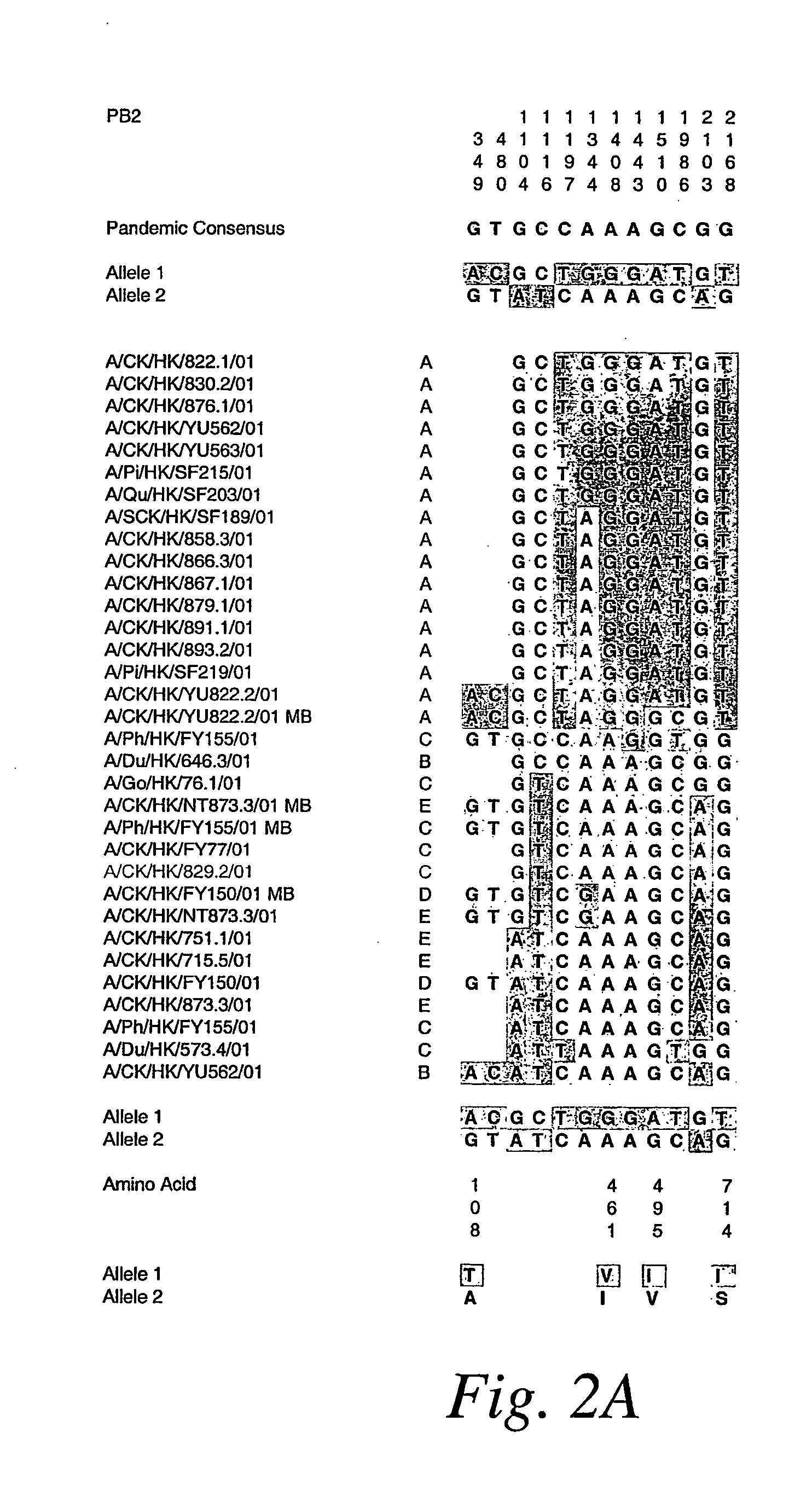Copy choice recombination and uses thereof
a technology of recombination and recombination, applied in the field of copy choice recombination, to achieve the effect of improving human or animal health
- Summary
- Abstract
- Description
- Claims
- Application Information
AI Technical Summary
Benefits of technology
Problems solved by technology
Method used
Image
Examples
example 1
Influenza A Emergence and Evolution Via Recombination
[0107] Influenza A is thought to evolve gradually via point mutations and abruptly via reshuffling of its eight segmented genes. Here, Influenza A evolution has been shown to be driven by recombination in hosts infected with two distinct viruses. Most polymorphisms of closely related viruses are bimorphisms, involving third base codon changes, which are silent at the protein level. The recombination generates both versions of the nascent genes and both viruses are viable. The recombination redistributes existing polymorphisms, allowing prediction of the genetic composition of new viruses, before they emerge. This recombination mechanism is common. It generates pandemic H5N1 influenza, as well as most or all, rapidly evolving genomes.
[0108] The looming H5N1 flu pandemic has attracted considerable attention (Peiris et al 2004; Fouchier et al 2005; Osterholm 2005). To determine the molecular mechanisms behind the evolution and emer...
example 2
Copy-Choice Recombination Between Distinct Viruses
[0141] The signature of copy-choice recombination can be observed in the mutant progeny of distinct types of parental viruses. In FIG. 5, a tract of 18 nucleotides in length has been conserved between Ebola in Africa and the 1918 flu pandemic, connected through intermediate mutant progeny strains of H5 influenza strains. Copy-choice recombination, when combined with selective pressure, can therefore act to conserve blocks of sequence between distinct parental viruses. The conserved block of 18 nucleotides shown in FIG. 5 likely encodes a small RNA, e.g., a miRNA, possessing functional activity. Similar recombination of sequences from distinct viruses has been observed for SARS, IBV and astroviruses (where a conserved 3′ stem loop structure is shared); foot and mouth disease and Newcastle disesase; and HIV and coronavirus.
example 3
Copy-Choice Recombination Applied to Bacteria
[0142] The ability to predict the composition of mutant progeny sequences of bacteria that are likely to arise from combination of parental bacterial sequences can be used to enhance prediction and identification of mutant progeny bacteria(e) that may possess a given phenotypic trait (e.g., drug resistance). Two parental bacterial sequences can be combined in vitro, in vivo, or in silico, with the rules of the present invention allowing for enhanced prediction of which mutant progeny bacteria(e) will exhibit a monitored trait. The present invention can therefore be applied, e.g., to drug screening approaches.
PUM
| Property | Measurement | Unit |
|---|---|---|
| time | aaaaa | aaaaa |
| time | aaaaa | aaaaa |
| time | aaaaa | aaaaa |
Abstract
Description
Claims
Application Information
 Login to View More
Login to View More - R&D
- Intellectual Property
- Life Sciences
- Materials
- Tech Scout
- Unparalleled Data Quality
- Higher Quality Content
- 60% Fewer Hallucinations
Browse by: Latest US Patents, China's latest patents, Technical Efficacy Thesaurus, Application Domain, Technology Topic, Popular Technical Reports.
© 2025 PatSnap. All rights reserved.Legal|Privacy policy|Modern Slavery Act Transparency Statement|Sitemap|About US| Contact US: help@patsnap.com



